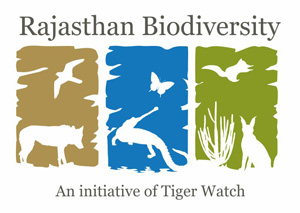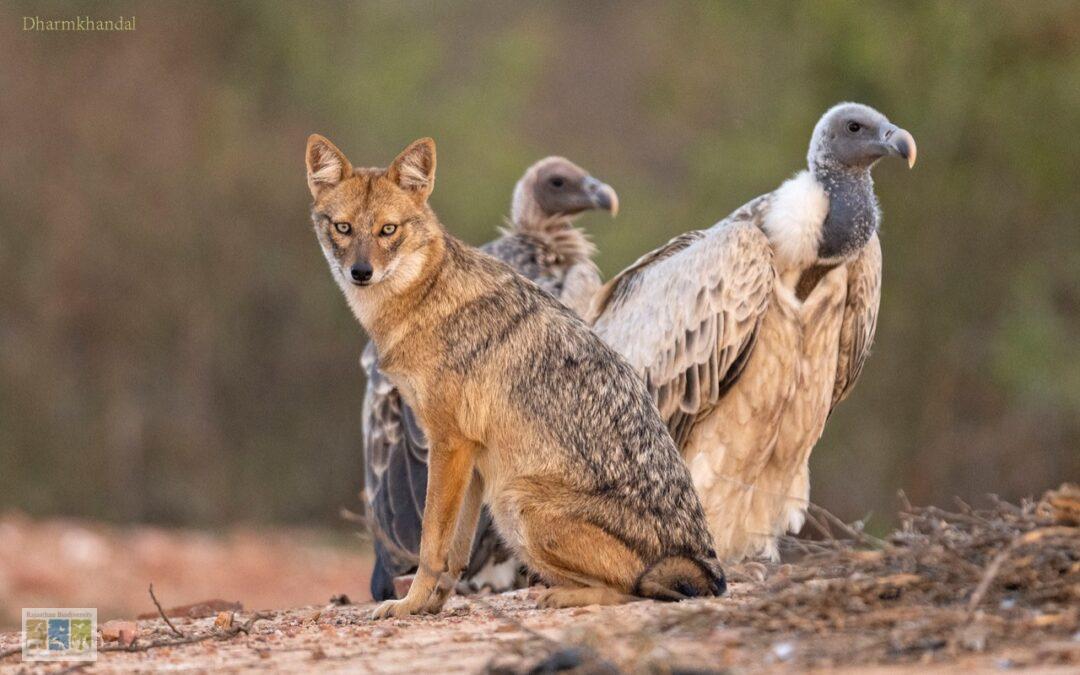Since ancient times, the cow has held a special place in Hindu culture, yet expounding on the virtues of this sanctity is often interpreted as a sign of rigid orthodoxy today. However, if you have even the slightest understanding of how ecosystems function, a gaushala in the district of Karauli named the Thekra Gaushala Dham might give you some ideas that might be deemed “out of the box”. For instance, I discovered how a jungle once ravaged by mining could be restored without plantation drives and the like.

Caption 1: Day-long struggles between vultures and jackals make this place unique.
The grazing area of this gaushala is 1790 bighas in size , and it was once decreasing on account of encroachment and of course being heavily damaged as a consequence of illegal mining. Thus complete chaos ensued in the gaushala’s name. Eventually, one fine day a gentleman named Sh. Munna Singh reversed the encroachment on the land with the support of local communities, and also had the illegal mining stopped for good.
2000 cows were given shelter in the Gaushala and due to the untiring efforts of this gentleman, arrangements for sufficient fodder and water were also made.Just as an ecosystem is nourished with manure and earthworms, in almost the same way, 2000 cows continued to fertilize the mining-afflicted soil with nutrients day and night in this vast area.


Caption 2: Migratory Eurasian Griffons
This area is now a safe ecosystem. I first had the opportunity to visit this area when a man-eating tiger from Ranthambhore called T-104 moved towards human habitation and stayed at this gaushala for a week from where the Forest Department moved it to a safer location with the help of the Village Wildlife Volunteers of Tiger Watch. The Village Wildlife Volunteers used to monitor the tiger in this area.
This ecosystem has improved even further with time, and today it is home to over 35 individuals of endemic vulture species and over 200 migratory vultures have been sighted this year. The interactions between these vultures and jackals is worth observing. There is very slight anthropogenic manipulation in the sense that the dead cows of the gaushala become an easy source of food for the vultures and jackals living here.

Caption 3: All the vultures give the jackals a tough fight.

Caption 4: Morning and evening sunlight is very important for the vultures in autumn. Perhaps the light falls straight on the inner wings.
If the Forest Department wishes, it can declare this place a protected area for vultures, so that this endangered group may have another safe haven. For this move, intense attention will have to be paid to the veterinary medicines used in the gaushala and the surrounding areas. Such a campaign can only be taken forward with the cooperation of local people.

Caption 5 : Limitations of food exacerbate conflict.
You can visit this place yourself with the consent of the gaushala management . It is 30 kms from Karauli on the Dholpur road. The gaushala managers are very sensitive towards the vultures, so you must observe the rules set by them.

Caption 6: Sh. Munna Singh, the gentleman responsible for this restored ecosystem.
TRANSLATED FROM HINDI BY ISHAN DHAR

